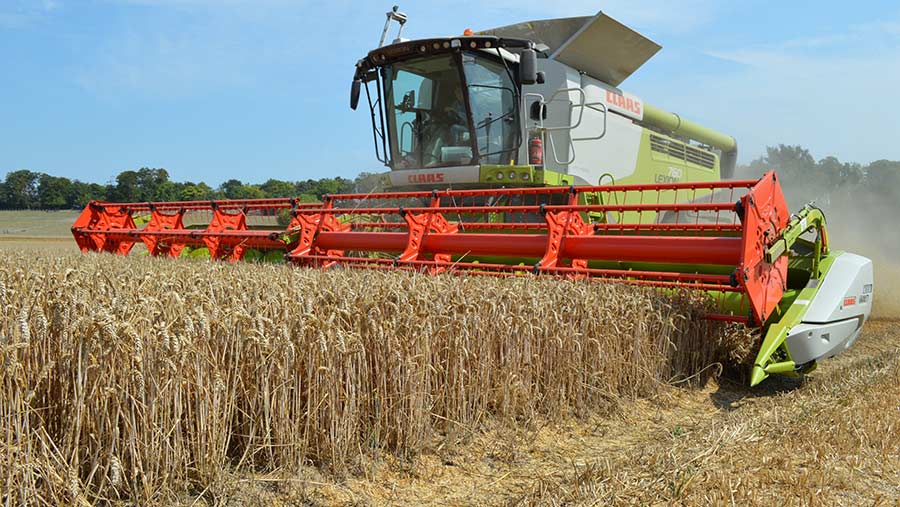Video: Wolverine wheat looks good in BYDV battle
 © MAG/David Jones
© MAG/David Jones The first wheat variety with resistance to an important aphid-spread disease is showing a yield of more than 10t/ha in Kent, with some seed available for growers this autumn.
The crop of winter wheat Wolverine with resistance to barley yellow dwarf virus (BYDV) was yielding between 10-13t/ha from the combine reading, with an impressive specific weight of near 80kg/hl.
See also: How wheat growers will benefit from virus-resistant variety
Kent grower Edward Batchelor said the RAGT-bred variety was not fully tested this season as it was drilled later than planned in October and the wet autumn was not conducive to high aphid numbers, but it still yielded well.
“We are very pleased with the yield given the very poor growing season we have had with a wet winter and dry spring,” he tells Farmers Weekly.
Yield loss
BYDV can cut wheat yields by up to 60% and there is no effective pesticide control after neonicotinoid insecticide clothianidin – used in seed treatment Deter – was banned last autumn. Meanwhile aphids are become more resistant to pyrethroid sprays.
Mr Batchelor, who farms with sons Steven and Ryan, only managed to drill 22ha of wheat last autumn with 12ha of hard-milling feed wheat Wolverine put in at a higher seed rate than planned due to late drilling. The rest of the field was in Gleam.
The variety Gleam, largely grown on the headlands, yielded 10-12t/ha, while the combine meter was touching 13t/ha in places cutting the Wolverine at a moisture of 13.4% and specific weight of 79.4kg/hl.
The family farms as J Batchelor & Partners, and the Wolverine was grown on one of its two farms at Wingham Well Farm, just east of Canterbury on some brickearth clay soil.
Seed production
The 35ft header Claas Lexion 760 raced through the seed crop on Monday, which was being grown to produce C1 seed. Mr Batchelor is looking to use some of the C1 seed to produce commercial C2 seed for autumn 2021.
The crop is being grow on contract for agronomy and seed group Frontier. The company’s crop production director Charlie Whitmarsh says it is good to see genetics being used to solve the BYDV problem.
“We are very excited about the new technology, and the variety is yielding as well and sometimes better than some other good wheat varieties,” he says.
Mr Whitmarsh adds that there will some C2 seed available in autumn for growers to try out ahead of its possible inclusion in the AHDB Recommended List in December.
With limited seed availability this autumn, the variety will only amount to less than 1% of the seed market, but it could take a 7-8% share in autumn 2021, he adds.
The variety could do well in southern and south-west England, where mild winters can encourage aphids, and could be useful if wheat growers turn to early drilling after the very wet autumn of 2019.
In the autumn, Mr Batchelor is looking to drill his wolverine wheat where he just harvested a lupin crop a month earlier than expected in early August, with a respectable yield of 2.5t/ha.

